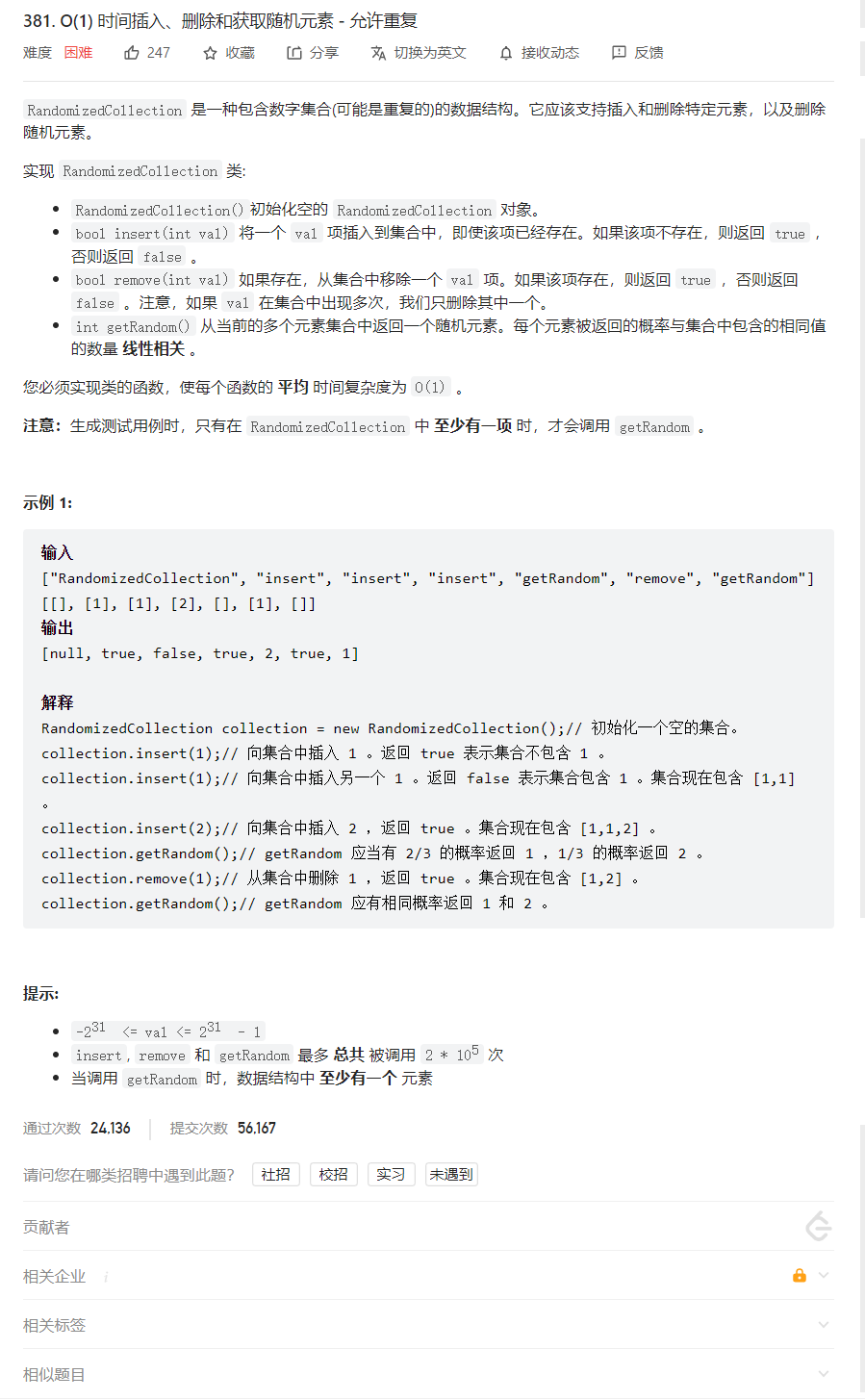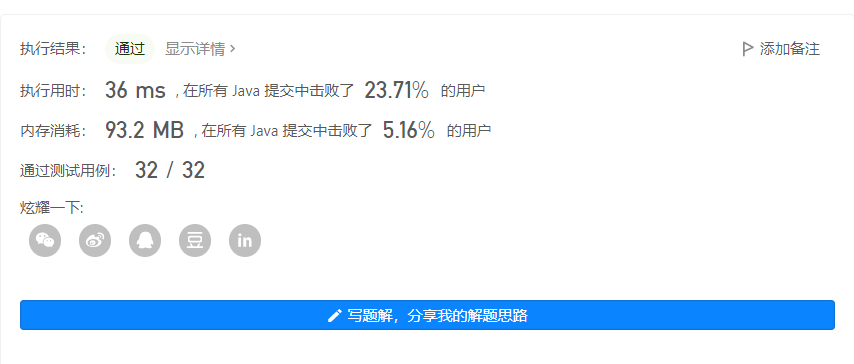🌕🌗 381. O(1) 时间插入、删除和获取随机元素 - 允许重复
2022年10月10日
- algorithm
🌕🌗 381. O(1) 时间插入、删除和获取随机元素 - 允许重复
难度: 🌕🌗
问题描述

解法
class RandomizedCollection {
// 思路:
// HashMap 存储 val - Set(index)
// ArrayList 存储 val
HashMap<Integer, HashSet<Integer>> map;
ArrayList<Integer> list;
public RandomizedCollection() {
map = new HashMap<>();
list = new ArrayList<>();
}
public boolean insert(int val) {
boolean res = false;
if(!map.containsKey(val)) {
HashSet<Integer> tmp = new HashSet<>();
map.put(val, tmp);
res = true;
}
HashSet<Integer> tmpList = map.get(val);
list.add(val);
int size = list.size();
tmpList.add(size - 1);
map.put(val, tmpList);
return res;
}
public boolean remove(int val) {
if(!map.containsKey(val)) {
return false;
}
HashSet<Integer> tmpList = map.get(val);
int size = tmpList.size();
// 通过 Iterator 获取 set 中一个下标
Iterator<Integer> it = tmpList.iterator();
int rvIndex = it.next();
tmpList.remove(rvIndex);
if(size == 1) {
map.remove(val);
} else {
map.put(val, tmpList);
}
// 针对 list 的操作
int len = list.size();
if(rvIndex == len - 1) {
// 删除的正好是总链表的最后一个元素
list.remove(len - 1);
return true;
}
int lastVal = list.get(len - 1); // 将 list 最后一个元素的值替换到 list 对应位置,那么 map 相关也需要改变
list.set(rvIndex, lastVal);
list.remove(len - 1);
tmpList = map.get(lastVal);
// 删除 set 中对应 list 的最后一个下标,替换成当前新下标即可
tmpList.remove(len - 1);
tmpList.add(rvIndex);
map.put(lastVal, tmpList);
return true;
}
public int getRandom() {
int len = list.size();
int index = new Random().nextInt(len);
return list.get(index);
}
}
/**
* Your RandomizedCollection object will be instantiated and called as such:
* RandomizedCollection obj = new RandomizedCollection();
* boolean param_1 = obj.insert(val);
* boolean param_2 = obj.remove(val);
* int param_3 = obj.getRandom();
*/
输出
